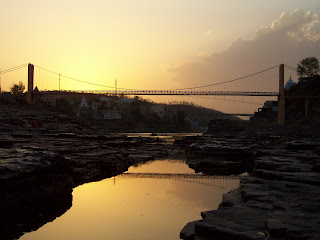



















In Delhi we had our last day with our group leader from the Mumbai to Delhi leg of the journey and met our new leader and group members. It was nice having such a small group through central India, but we were also fortunate to gain some great new people and a veteran guide that knows north India and the tour leader trade very well.
In Delhi, we toured the Old Delhi spice markets, and back alleys, a Sikh temple, India Gate and The Gandhi Museum. Since we ended one tour and started another, we actually got to see several of the sites twice with the two different group leaders. It was interesting to see the spice markets on the two different days, because on the second day most of the spice market was closed, which made it feel like a ghost town compared to the chaos from the day before. We also wondered the city on our own for a few hours and got a better feel for how big the city is. We wanted to see some of the old city gates that were marked on the map and looked nearby. They turned out to be quite far away and we never could find the actual gates, but we did find another street spice market, which was quite interesting after seeing the main spice markets earlier. The main market was a series of open front markets on the ground floor of buildings with produce tables and bins pouring out onto the sidewalk and the street market was a collection of vendors with their goods spread out on sheets along a wide street with a backdrop of rickety shanty town shacks.
We visited another large mosque in Delhi, the Jama Masjid, which can hold up to 25,000 worshippers and is said to be the largest in India, which would make it the second largest in the world if the one in Bohpal is actually the third largest and the Jama Masjid is the largest in India... I can't confirm or deny either claim, but the mosque was big.
The India Gate was interesting because I didn't know it was a war memorial and had assumed it was similar to the Gate of India in Mumbai which was built to welcome the Queen of England on one of her visits. Beneath the gates arch is a memorial to fallen soldiers and a guard detail similar to the Tomb of the Unknown Soldier in the US.
Two days was not enough time to properly explore Delhi, but we did get a taste and then we were off to our first stop in Rajastan, Jaisalmer, the golden city.



















- Our guide lives close to Mandu and three of his friends came up to visit him and hang out while our tour was in town. We hung out with them both nights and had a great time eating, drinking and chatting with them.
- Amongs Mandu's ruins is a tomb, built of white marble, that was visited by the architects of the Taj Mahal for inspiration before beginning work on the Taj. This is also where our group member passed out, so either she fell victim of Delhi Belly, or she too was awe struck by the structure.






